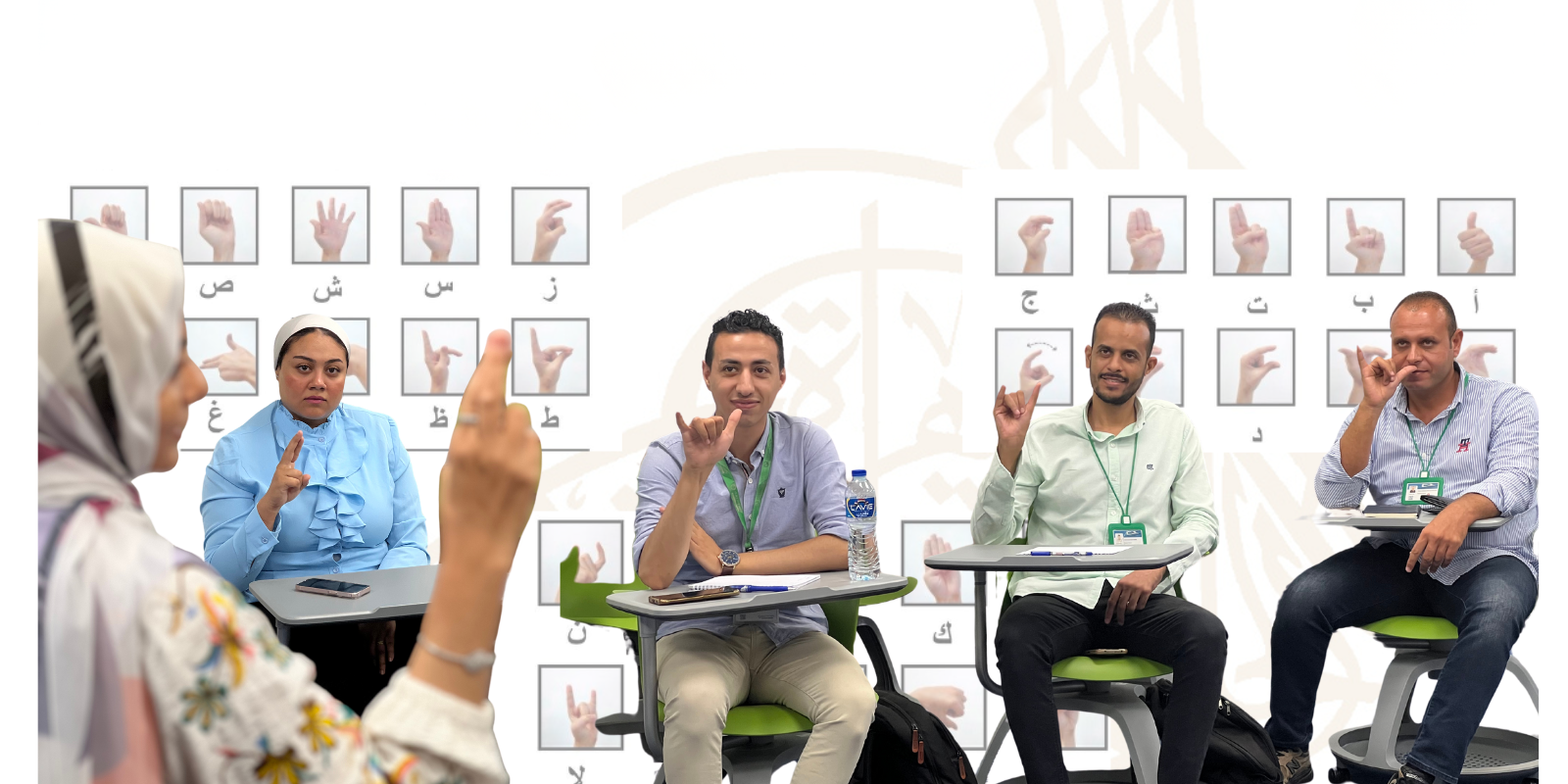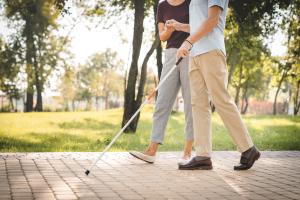
AUC's New Sign Language Workshop
Did you know that sign language, like spoken language, is not universal? Egyptian Sign Language, the most commonly used type of sign language in Egypt, differs from other international sign languages.
The universality of sign language is one of the misconceptions that a new workshop offered by the School of Continuing Education, Basics of Egyptian Sign Language, aims to address. The workshop equips participants with basic sign language skills, enabling them to communicate effectively with people who are deaf or hard of hearing, promoting inclusivity and accessibility.
Maged Habashy, director of the Languages Department at SCE, said, “This workshop can benefit anyone — AUC faculty, educators, healthcare professionals, customer service agents and more.” The workshop is currently training 180 customer service agents on sign language in collaboration with a French company running the Cairo Light Rail Transit between Cairo and the New Administrative Capital.
“The sign language workshop at AUC was a remarkable experience for me. It added a lot to my understanding of deaf culture and the needs of the deaf in communications.”
Offered in AUC Tahrir Square, the workshop kicks off by training participants to sign the Arabic alphabet and greetings, as well as vocabulary relating to family, professions, religion, governorates and countries. Participants also learn to sign adjectives that express different emotions, allowing them to maintain conversations with people who are deaf using complete sentences.
“The sign language workshop at AUC was a remarkable experience for me. It added a lot to my understanding of deaf culture and the needs of the deaf in communications,” said participant Wafaa Shoukry.
In addition to linguistic skills, the workshop highlights the culture of people who are deaf and addresses several misconceptions, including the notion that they are intellectually challenged or unable to participate in society. The first part of the workshop is dedicated to correcting such misunderstandings and exploring the need for sign language skills in the Egyptian community.
As interest grows, SCE plans to offer an advanced Egyptian Sign Language course in the future. Shoukry, who is excited to build on her skills in future sessions, said, “I highly recommend this workshop to anyone interested in learning sign language.”
The workshop is available on demand on the SCE website.




